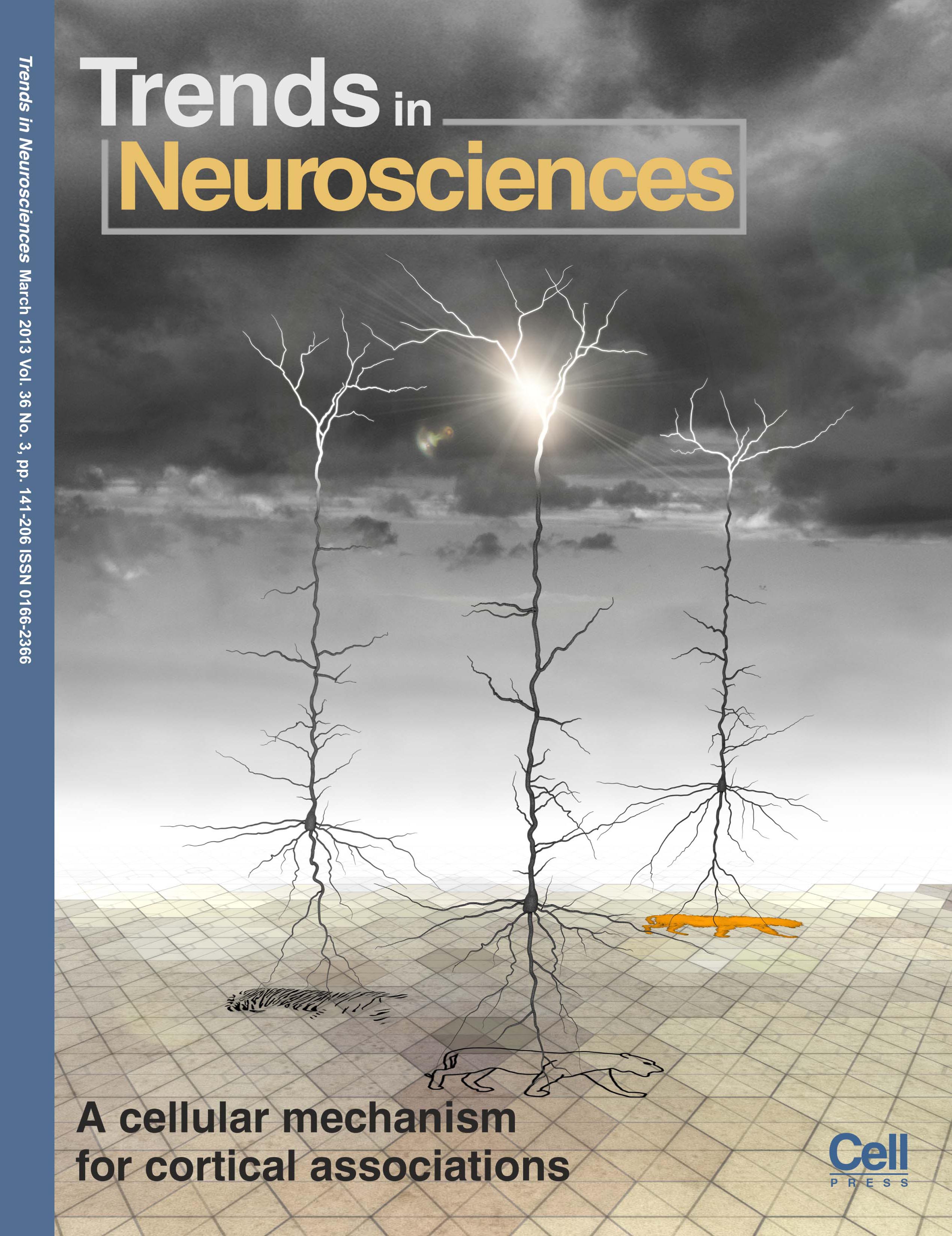Our laboratory explores the hypothesis that the circuitry of the neocortex combined with the active dendritic properties of pyramidal neurons allow the cortex to associate feed-forward and feedback information arriving within a specific time window. This hypothesis represents a high-level theory of cortex that, if proven, could serve as a framework for understanding many problems including cognition, feature binding and perception.
Both the architecture and the physiology of the cortex demonstrate that feedback information from higher cortical areas onto lower areas plays a vital role in cognition. This has been underscored by countless studies. Nevertheless, there is as yet no mechanistic explanation for the influence of feedback. Indeed, the influence of feedback on cognition is quite mysterious when it is considered that a large component of feedback input arrives in layer 1 (L1) of the cortex which is a cell-sparse layer consisting of only the apical dendrites of pyramidal neurons and a handful of interneurons.
Based on this, the fundamental hypothesis of our laboratory is that the extraordinary performance of the cortex derives from an associative mechanism (“BAC firing”) built in at the cellular level to the basic cortical neuronal unit: the pyramidal cell. The mechanism is robustly triggered by coincident input to opposite poles of the neuron, is exquisitely matched to the large- and fine-scale architecture of the cortex, and is tightly controlled by local microcircuits of inhibitory neurons targeting subcellular compartments.
References
- Gidon A, Zolnik TA, Fidzinski P, Bolduan F, Papoutsi A, Poirazi P, Holtkamp M, Vida I, Larkum ME. (2020) Dendritic action potentials and computation in human layer 2/3 cortical neurons. Science 367:83-87.
- Granato A, Phillips WA, Schulz JM, Suzuki M, Larkum ME (2024) Dysfunctions of cellular context-sensitivity in neurodevelopmental learning disabilities. Neuroscience & Biobehavioral Reviews. 2024 Apr 25:105688.
- Larkum ME (2013) A cellular mechanism for cortical associations: an organizing principle for the cerebral cortex. Trends in Neurosciences 36: 141-151.
- Larkum ME (2022) Are dendrites conceptually useful? Neuroscience 489, 4-14.
- Larkum ME, Kaiser KMM, Sakmann B. (1999b) Calcium electrogenesis in distal apical dendrites of layer 5 pyramidal cells at a critical frequency of back-propagating action potentials. PNAS 96: 14600-14604.
- Larkum ME, Nevian T, Sandler M, Polsky A, Schiller J. (2009) Synaptic integration in tuft dendrites of layer 5 pyramidal neurons: a new unifying principle. Science, 325: 756-760.
- Larkum ME, Petro LS, Sachdev RNS, Muckli L. (2018) A perspective on cortical layering and layer-spanning neuronal elements. Frontiers in Neuroanatomy 12.
- Larkum ME, Senn W, and Lüscher H-R. (2004) Top-down dendritic input increases the gain of layer 5 pyramidal neurons. Cerebral Cortex, 10: 1059-70.
- Larkum ME, Zhu JJ, Sakmann B. (1999a) A new mechanism for coupling inputs arriving at different cortical layers. Nature. 398: 338-341.
- Major G, Larkum ME, Schiller J. (2013) Active properties of neocortical pyramidal neuron dendrites. Annual Review of Neuroscience 36: 1-24.
- Munn BR, Müller EJ, Aru J, Whyte CJ, Gidon A, Larkum ME, Shine JM (2023) A thalamocortical substrate for integrated information via critical synchronous bursting. Proc Natl Acad Sci U S A. 120(46):e2308670120.
- Murayama M, Larkum ME. (2009) Enhanced dendritic activity in awake rats. PNAS, 106: 20482-20486.
- Murayama M, Pérez-Garci E, Nevian T, Bock T, Senn W, Larkum ME. (2009) Dendritic encoding of sensory stimuli controlled by deep cortical interneurons. Nature, 457: 1137-1141.
- Palmer LM, Shai AS, Reeve JE, Anderson HL, Paulsen O, Larkum ME. (2014) NMDA spikes enhance action potential generation during sensory input. Nature Neuroscience 17: 383-390.
- Phillips WA, Larkum ME, Harley CW, Silverstein SM. (2016) The effects of arousal on apical amplification and conscious state. Neuroscience of Consciousness 2016:niw015.
- Seibt J, Richard CJ, Sigl-Glöckner J, Takahashi N, Kaplan D, Doron G, de Limoges D, Bocklisch C, Larkum ME. (2017) Cortical dendritic activity correlates with spindle-rich oscillations during sleep in rodents. Nature Communications 8: 684-696.
- Shai AS, Anastassiou CA, Larkum ME, Koch C. (2015) Physiology of layer 5 pyramidal neurons in mouse primary visual cortex: coincidence detection through bursting. PLoS Computational Biology 11.
- Suzuki M, Larkum ME. (2017) Dendritic calcium spikes are clearly detectable at the cortical surface. Nature Communications 8: 276-286.
- Takahashi N, Ebner C, Sigl-Glöckner J, Moberg S, Nierwetberg S, Larkum ME. (2020) Active dendritic currents gate descending cortical outputs in perception. Nature Neuroscience, 23, 1277-1285.
- Takahashi N, Oertner T, Hegemann P, Larkum ME. (2016) Active cortical dendrites modulate perception. Science 354: 1587-1590.

